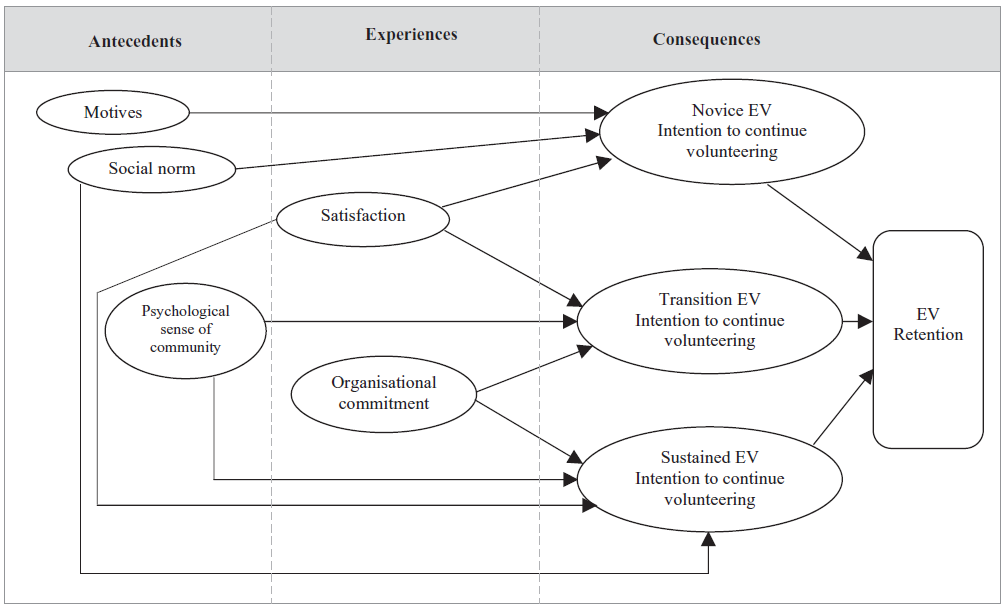
What Makes Members Volunteer and Keeps Them Coming Back
Two research studies on volunteer motivations and experiences offer new clues about how to find and keep happy member volunteers at your association.
We talk a lot about member engagement here at Associations Now and in the association community at large, and one end of the member-engagement spectrum is volunteering. However, even within that group of members who step forward to help the association do its work, there exists a range of commitments, from multi-year board or committee terms to short, ad hoc helper tasks. In any case, it’s important to know what makes volunteers tick.
Two new research studies, both coincidentally led by academic teams in Australia, offer some new insights into the motivations and experiences of nonprofit volunteers. One sheds light on what leads “episodic” volunteers to come back on a regular basis, and the other examines how different types of volunteer motivations are related to volunteers’ sense of well-being and, again, intention to continue volunteering.
A Model for Retaining Episodic Volunteers
In one study, titled “Episodic Volunteering and Retention: An Integrated Theoretical Approach” and published online in December in Nonprofit and Voluntary Sector Quarterly, researchers at Griffith University in Gold Coast, Australia, examined the factors that influence retention of “episodic volunteers” (EVs)—those who volunteer on a periodic or recurring basis rather than in an ongoing capacity—focusing specifically on a pool of Relay for Life team leaders in 2013. They found that specific factors such as satisfaction and commitment to the organization matter differently at various stages of volunteering: Novice (first-time volunteers), Transition (sporadic volunteers over two to four years), and Sustained (volunteers who return for five to six years consecutively).
Feeling a sense of satisfaction with and enjoyment of the first experience of volunteering is critical; without this, volunteers are unlikely to return.
For Novice EVs, factors linked to increased intention to continue volunteering included satisfaction with the event experience and social expectations stemming from fellow volunteers. (First-time volunteers are often asked by family and friends to participate.) For Transition and Sustained EVs, satisfaction remained an influencing factor, but it was coupled with the volunteers’ growing commitment to the organization, which was also tied to higher volunteer retention.
The researchers plotted these and other influencing factors in a diagram they call the EVER model (Episodic Volunteer Engagement and Retention):

(EVER model diagram excerpted via Creative Commons Attribution-NonCommercial 3.0 Unported license. Click to enlarge.)
Melissa Hyde, Ph.D., research fellow at Griffith and lead researcher on the study, says that, while the context of the study’s findings were specific to event-based volunteering for a cancer charity, the results suggest that episodic volunteers may follow a somewhat predictable arc in their volunteer experience over time. “Feeling a sense of satisfaction with and enjoyment of the first experience of EV is critical; without this, volunteers are unlikely to return,” Hyde wrote in an email. “As people continue to volunteer, they may develop a sense of connection to the organisation or event they volunteer for or to their community more broadly. This means that their motives for EV may transition over time to focus more on helping the cause or the organisation achieve their mission. Equally, as EVs become more invested over time, the factors that contribute to their satisfaction may also change to hinge more on the organisation and its practices and less on the experience of volunteering.”
In the association field, the equivalent term for episodic volunteers may be “ad hoc volunteer” or “micro-volunteer.” This style of volunteering has earned increased attention in recent years among associations striving to provide busy professionals with volunteer opportunities that fit their schedules. The practical implications of Hyde’s team’s findings may help associations increase their success in that effort. In the report they suggested that “having sufficient information about episodic volunteer roles for the event as well as event characteristics … may affect Novice EV satisfaction” and that “organizational transparency and information regarding expenditure of funds raised may strengthen transition and sustained EV commitment.”
Hyde also urges effective feedback-gathering from EVs. “Often, the factors that contribute to satisfaction or otherwise are not clear until after the fact, which is why my personal opinion is that it is still important to check in with EVs about what their experience was like and to have someone on the ground with the volunteers to obtain first-hand knowledge of what worked well and what did not,” she wrote. “This, I believe, is particularly critical for EVs, because they are the volunteers who are more likely to be time-poor, have less contact with an organisation or other volunteers, and may be less likely to communicate their dissatisfaction.”
Helping Others Makes Happy Volunteers
In another study, titled “Motivations to Volunteer and Their Associations With Volunteers’ Well-Being” [paywall] and also published online in December in Nonprofit and Voluntary Sector Quarterly, researchers at La Trobe University in Melbourne, Australia, surveyed more than 4,000 volunteers in the state of Victoria and found that those who were primarily “other-oriented” (i.e., motivated to help others) were more likely to report higher levels of well-being, satisfaction, and intentions to continue volunteering than volunteers who were primarily self-oriented (i.e., motivated by reasons such as career advancement or boosting self esteem).
The findings suggest that “organizations that work with volunteers may wish to seek those with other-oriented motivation and to encourage it in current volunteers,” the researchers wrote, though they cautioned that “volunteers are rarely purely other-oriented or self-oriented in their motivations.”
Arthur Stukas, Ph.D., associate professor at La Trobe and the study’s lead researcher, says he suspects other-oriented motivations may simply be easier to fulfill—it’s easier to make volunteers feel that they’re contributing to a good cause than it may be to help them find a new job.
For professional and trade associations, though, career advancement is a commonly cited potential benefit of engagement. The La Trobe study’s findings suggest to associations that career advancement should be just one among many benefits offered to encourage volunteering and, if oversold, volunteers motivated by career advancement may be left disappointed.
“My recommendation would be that organizations seek to create recruitment materials that highlight their mission and the values that the organization promotes and to find volunteers who hold values that are congruent,” Stukas wrote in an email. “However, I also [recommend] promoting the additional benefits of volunteering, from the relatively other-focused rewards of learning about other people and the cause and living up to the social expectations of the community to the more self-focused rewards that may include feeling good about oneself (that is, well-being and life satisfaction) and, if appropriate, receiving career and training benefits. Of course, organizations need to be careful to make sure that they are able to provide the benefits that they are offering!”
How does your association recruit and retain volunteers? Do you try to appeal to specific types of volunteer motivations? And do you engage new and seasoned volunteers differently? Please share in the comments.
(iStock/Thinkstock)






Comments